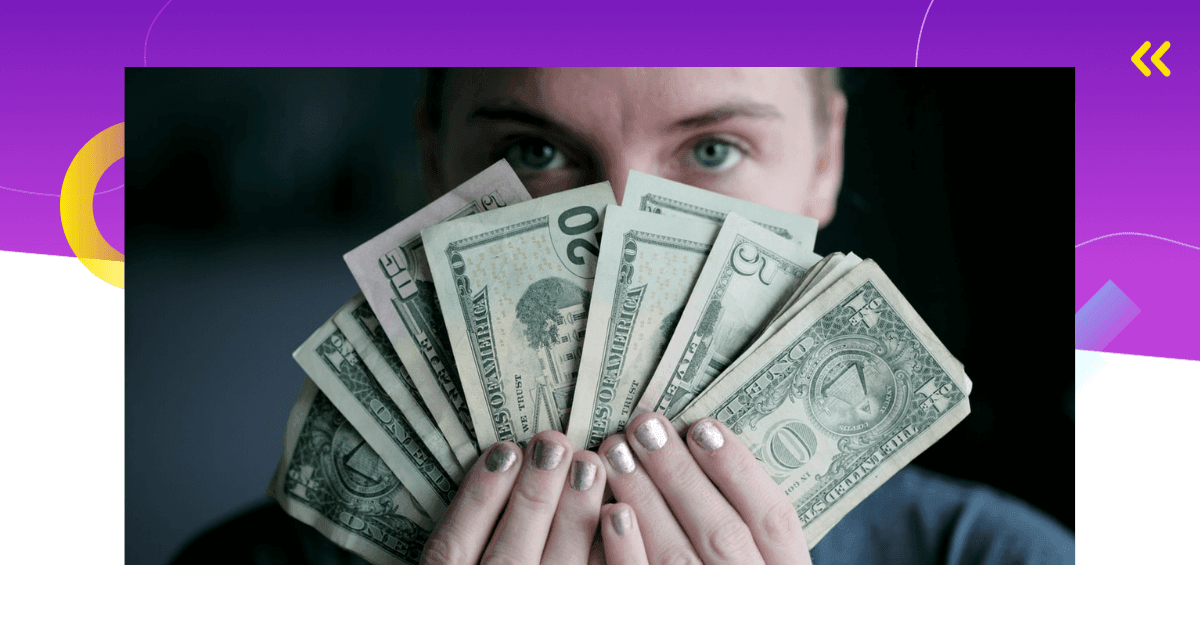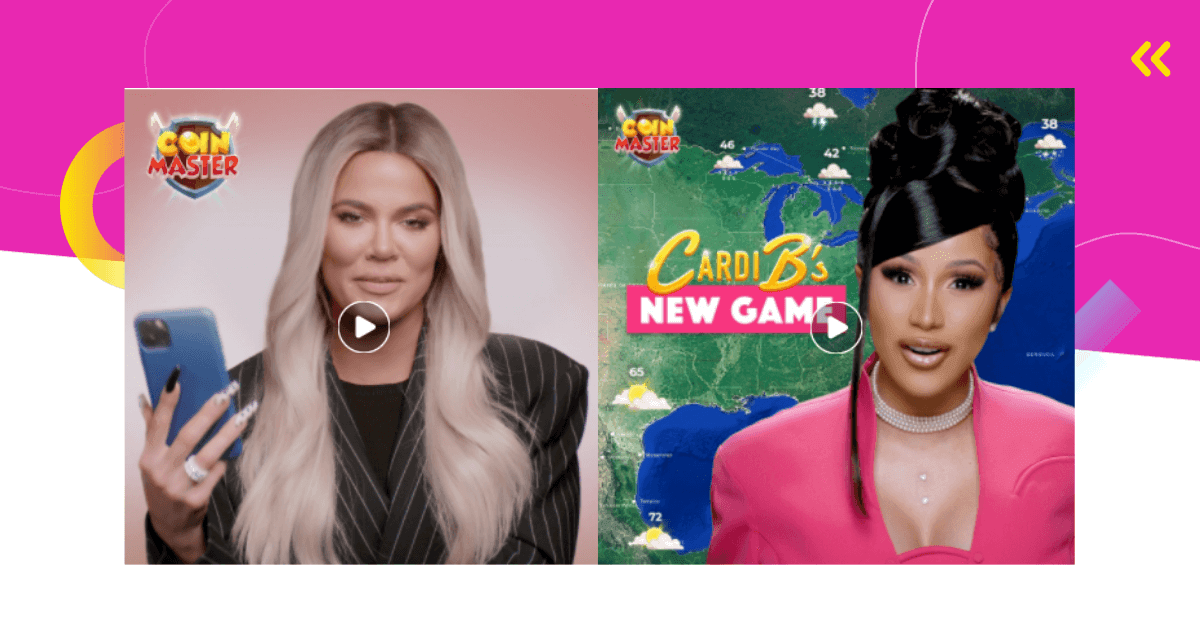Looking for monetization tips for your mobile game? Whether you’re starting from scratch or are looking for ways to improve your existing game’s profit, we got you. Don’t let your game become one of those amazing games with poor monetization.
To help you with this, we will go over everything you need to know about three important monetization trends:
And we know how to get the best out of them.
Mobile Gaming Market and Monetization
There are many ways to monetize a mobile game, but not all work equally well in today’s competitive market.
The biggest challenge of game monetization is making it work for both sides: players and developers. Generally, the players don’t mind monetization features as long as the game is free and the features don’t interrupt the gameplay.
For this reason, most of the games produced today are free-to-play. These games make money by exposing players to in-game ads and purchase offers.
The majority of free-to-play games fall into what is called the “freemium” model.
With this model, there are no entry and playing costs, but if the players want to enhance their experience, they can purchase it. Freemium relies on a small percentage of players who are looking for a premium experience.

Monetization Models
When the app store was first created, mobile game developers followed a very simple principle to monetize their game → pay once and play as much as you want.
With the rise of the freemium economy, mobile games have outgrown the one-price structure, and paid games aren’t nearly as popular as they used to be. At this point, monetization got a bit more sophisticated.
In-app purchases became the pillar of the freemium economy and remained the most popular model since its inception. Today, 79% of gaming apps include in-app purchases in their monetization strategy (Business of Apps).
On the other hand, in-app ads experienced a tremendous rise over the last couple of years, with hyper-casual games leading the trend. According to eMarketer, 82% of mobile gamers prefer free games that contain ads over paid games with no ads.
Today, there is one model that is predicted to turn the whole mobile gaming market upside down in the foreseeable future – subscriptions.
Let’s go into more detail about each.
In-App Purchases
The principle behind in-app purchases is simple → the game remains free to play, while the players can pay real money to buy additional items or features.
What you’ll offer as in-app purchases depends on your game’s genre and core gameplay.
Most commonly, IAP offers come as in-game currency, lives, boosts, etc. Anything that will help the player advance in the game.
In most cases, in-app purchases come in the form of consumables and non-consumables. They can even come as subscriptions, but we will get more into that later.
Consumables are the most used form of in-app purchases. Once you buy and use them, they are gone. They are not reusable, so if you want to use them again, you will need to make another purchase (e.g., coins, bonus health, etc.).
On the other hand, once players buy non-consumables, they get to keep them. Non-consumables come with permanent access and the player owns them. Some examples of non-consumables are unlocking a bonus level or a new character.
All of these items are given out during gameplay but only in the amounts that are necessary. The key is not to give out too many items for free. The players should be left thinking about what their options are.
Squeezing money directly out of gameplay is not an easy task. You will need to come up with good reasons to persuade someone to make a purchase.
After all, a small group of users runs the numbers. They are competitive, engaged, play long sessions – and are called mobile gaming whales.
In-app purchases are most popular in the mid-core category, mainly in strategy and role-playing games. However, they can be found across all genres, and are also quite common in casual games.
5 Monetization Tips for in-App Purchases
If in-app purchases are the game’s primary main monetization model, it is extremely important to plan them early enough.
You should start thinking about them when developing your game because they are tied to the gameplay.
1. Integrate Them Strategically
In-app purchases should be introduced at the right places, and at the right time.
The key to this is balancing them out with the players’ in-game progression and game difficulty. Every time you introduce them, the players should feel like they need them.
You can present the players with the first IAPs early. When introducing them to the game, you can just let them know that IAP features exist. In this phase, don’t be aggressive with the offers. It’s important for the players to enjoy the game before they are pushed to make a purchase.
In later stages, they should appear at the moments when the player is in need of assistance.
It is extremely important that your IAPs don’t make the game “pay-to-win”. This ruins everyone’s fun, especially in multiplayer games. Making in-app purchases can give the players some competitive advantage, but non-payers shouldn’t feel completely helpless when playing against them.

2. Set Optimal Prices
Determining prices for your in-app purchase items is best done in the development phase.
This will give you the option of playing with different price points and finding the ones your users react to best. Set a target ARPU and track what will come close to it.
Another important thing is that you offer a range of price points – something for everyone. It’s not likely that the users will purchase the same items over and over. If you offer them a selection, they will likely come back to explore other options.
According to DeltaDNA, your cheapest offer should be above $2. Also, each offer that comes with a higher price has to come with a better value for money.
From what we’ve seen in a lot of top-grossing games, six offers seem to be the optimal number. Also, most games have price ranges from $0.99 to $99.99.
However, don’t rely on what works for most games. The most important thing is to find the number of offers and price points that work for you.
3. Don’t Forget Discounts
To make in-app purchases even more attractive, offer them at special prices. You can make them whatever you want: bundle deals, time-sensitive offers, personalized offers, etc.
To get the most out of discounts and offers – don’t make them generic, but try and adjust them to the player. The best way to do this is by segmenting players into groups. You can differentiate between new and loyal players, or payers and non-payers.
For example, new players can receive “Starter Pack” or “Starter Bundle” offers. These kinds of offers should make players feel special and understood.
4. Use Notifications Wisely
When you have time-limited discounts and other deals, you will want to notify your players. For this purpose, you will use push notifications, messages, or pop-ups.
There is nothing wrong with using them, but they have to be as unobtrusive as possible. This means making them relevant, engaging, and personalized.
Another thing to avoid is notifying players of new offers – all the time. This way, the users will not perceive them as valuable, but rather as pushy and obtrusive.
5. Understand Your Cohorts
Your users come in many different groups and you should approach them separately.
Here are a few criteria you can use to separate them into cohorts:
- The stage of the game they are currently at
- Which items they buy most
- How much they typically spend
- How long has the game been installed on their devices
- The number of sessions they had
Your most important cohort are your biggest spenders, so-called whales. These users will spend about $100 or more during their lifetime in the game (DeltaDNA).
As their spending consists of multiple purchases they make in a lifetime, it’s extremely important you’re able to recognize them and establish a special relationship with them. For example, you can provide them with benefits such as extra items, unlocked levels, special discounts, etc.
In-App Ads
Ad monetization has been rising in popularity over the last few years, and it has proven effective for many apps and games.
And here’s how it works.
There are three sides involved. Players enjoy free gameplay, while developers display in-app ads to earn money. The third side are advertisers who are happy to show their ads to potential new users.
The ads are served through a game ad network where advertisers demand in-game placements. Since each ad network comes with its own advantages (targeting options, supported ad formats, etc.), developers, i.e., advertisers usually work with several of them.
In-app ads come in several ad formats, and these are the most important ones:
- Interstitial ads
- Rewarded ads
- Playable ads
- Native banners
- Offerwalls
When choosing which ones to include, you have to consider your game type and your goals. Among these, rewarded video ads and interstitials are the most popular choices.
The most important thing when integrating in-app ads into any game is that they don’t interrupt gameplay. For this reason, they should appear in natural gameplay transitions.
5 Monetization Tips for In-App Ads
In-app ads are often perceived as something negative and annoying. This is only because a lot of developers make basic mistakes when including them into their games.
Here are a few tips to help you not make the same mistakes.
1. Pay Attention to When and Where Ads Appear
As I mentioned, ads should appear in optimal positions – where the game pauses. This goes for all ad formats, with no exceptions. Some of the possible placements for in-game ads include:
- Before the beginning of the gameplay
- Natural gameplay breaks
- Right after the gameplay
When ads appear in these placements, the players are most receptive to them. Instead of perceiving them as interruptions, they can become breaks welcomed by the players. For example, after finally solving a puzzle, the player might be craving a break before getting into another one.
2. Show the Right Number of Ads
If you thought squeezing as many ads into your game is a good idea, it’s not.
You should be careful about how many ads you will display. Showing too many of them will inevitably ruin the user experience. This is important for your CPMs as they are affected by both ad format frequency and ad frequency overall.
There is no frequency rule that can apply to all games. For example, hyper-casual games are driven by ad revenue. These games should display 2-3 ads in one minute (Adjust). However, for some other genres, this would be way too much.

3. Use Rewarded Video Ads
This ad format is incredibly popular both among developers and players. In fact, according to Techcrunch, 68% of users like this ad format.
Rewarded video ads come with high CTRs, completion rates, and eCPMs.This format can also prolong play sessions as well as increase user engagement and retention.
The reasons for this are obvious – players love getting rewards. Just make sure to make the rewards valuable enough to motivate the users to watch them.
Also, to get the most out of this format you should introduce them early. They are often even incorporated in the start menu. That way, the players can come back to claim rewards at any time.
4. Show Fitting Ads
Ad placements and frequency aren’t the only things to pay attention to. It’s equally important that the ads you display are relevant, interesting, and useful.
Consider displaying ads that are from the same or similar genres, and make sure they are high-quality. Another thing the players like is ad localization.
For this reason, it’s extremely important to know your audience well. Ads that are not well-targeted can end up frustrating players.
5. Combine Ad Formats
There are many reasons why 68% of developers use more than 1 ad format in their games (DeltaDNA).
A common combination includes two most popular ad formats: rewarded video ads and interstitials. Both of these are found between levels and other game stages.
The key is knowing when to include which. You can use interstitials when you believe the players could use a break. Rewarded video ads can be incorporated into the levels where you notice that your players are struggling, resulting in high drop-offs.
Playable ads can also be found during gameplay breaks, while banner ads can be found all over the place. In the start menu, at the bottom of the screen during gameplay, etc.
To find the best combination, test different ad formats, and their frequency.
Mobile Game Subscriptions
Freemium mobile games often rely on subscriptions as a monetization model.
Subscriptions are a set amount of money players pay on a regular basis to access special in-game features and additional content. The subscription period is often set as weekly, biweekly, or monthly.
Subscriptions come in different forms, some of which are very different from others.
With a subscription-only model, the game cannot be played unless the users purchase a subscription. This type of subscription typically comes with a free trial.
This model is rare, as mobile game subscriptions mostly appear as a type of in-app purchases.
They appear as auto-renewable and non-renewing subscriptions. The difference between the two is how they act when the set subscription period ends. Auto-renewable subscriptions are ongoing until the user cancels them. Non-renewing subscriptions, on the other hand, have to be manually renewed.
A relatively new concept that includes subscriptions is a so-called umbrella or cross-game subscriptions. With this type of subscription, the user pays a monthly fee to access numerous games on a single platform. With this model, the players enjoy unlimited gameplay, with no in-app purchases or in-app ads.
Finally, the subscription model comes with numerous benefits such as providing a steady revenue stream as well as increasing retention and user loyalty.
Some examples of subscription features in mobile games are Battle passes and VIP subscriptions.

5 Monetization Tips for Subscriptions
As we mentioned, subscriptions are very diverse. So let’s go into details about the most common types.
We give you monetization tips for integrating them into your game as a type of in-app purchase.
1. Offer Different Subscription Models
If the users are thinking about upgrading to a subscription, give them options.
You can diversify your subscriptions by duration (weekly, monthly, yearly…) or by available features (e.g., basic, pro, pro plus).
It’s a good idea to give the players the ability to choose between several options because it makes them more likely to purchase a subscription.
The purchase-based list is especially attractive because it seems like they are getting a bargain.
2. Offer the Right Benefits
When choosing which benefits to offer within a subscription, think long-term.
Ask yourself: What is valuable enough for my players to keep paying a fee?
When it comes to subscriptions, the best benefit you can offer is any kind of access.
Depending on your game type, you can offer unlocking levels, characters, maps, or tournaments.
Some other examples of subscription benefits are ad removal, battle pass rewards, boosters, VIP status, etc. Anything that might work for your game.
The key thing about subscription benefits is that they can’t be static. Instead, they should evolve and gain new value with each subscription renewal.
3. Separate Player Groups
Customize your subscription offers by separating player groups. After all, different groups find different things valuable.
For this reason, new players should be offered a free trial period, special rewards, and introductory prices.
Loyal players might be motivated to renew their subscriptions by other factors like premium experience and VIP features. You can also create a special point-based loyalty program for these players.
4. Engage Your Subscribers
In order to make your subscribers log in on a regular basis, include predictable and recurring features. This includes things like daily:
- Rewards
- Allowance
- Tasks/missions
Another way to engage subscribers is to make them earn benefits by creating an engagement loop. A good example of this are Battle passes. When players purchase them, they earn the right to compete and earn rewards.
Also, a lot of battle passes feature special rewards that are exclusive to battle passes.
These are usually some kinds of cosmetic items. This feature is especially popular in multiplayer games. The thing is, in such games, players have an opportunity to show off their cosmetic items and brag with them.
5. Make Them Feel Like a VIP
When users subscribe to the game, they expect special treatment. Subscriptions are often VIP-based, offering players exclusive benefits. Some examples of those benefits are:
- Early access to events, features, content, etc.
- VIP-only customer support
- Lifetime rewards
Ultimately, your goal is to make the players never want to go back to the free-to-play model after experiencing the game from the subscriber’s point of view.
Universal Monetization Tips
Even though all of these models seem a lot different, they have plenty of things in common.
Here are some ultimate monetization tips that you can apply to all of these models.

User Experience Is #1
Without engaged and loyal players that truly enjoy your game, you can’t expect a continuous revenue stream.
If you get a bunch of new users to install your game, and they stumble upon a lot of ads, i.e., have a bad ad-related user experience, they will soon churn.
This approach might earn you some money in the beginning. But in the long term, this will affect your game’s reputation and ratings.
I’m not saying that you should camouflage your ads or use in-app purchases, but to balance them out.
In other words, don’t be too aggressive.
This not only refers to ads, but to IAPs as well.
Sure, if your players’ LTVs are short, you want to monetize them as soon as possible. However, there is such a thing as too soon and too aggressive.
For example, if players receive IAP pop-ups as soon as they launch the game. This would make me churn immediately. And a lot of other players as well.
Also, it’s bad to make every single in-app purchase a pop-up and then bring five of them in a row. Please don’t do this.
Generally, aggressive monetization practices are very likely to make players churn. If not, they are just going to start ignoring them.
Bad for you either way.
Start Planning in the Development Phase
For maximizing game revenue, it’s critical that you start in the development phase. This phase allows you to test all of your games’ monetization features.
You will find out what’s working and what features are in need of improvement, or even removal.
Perhaps you will find out that your ad placements are too frequent. Or that your unlockable levels aren’t attractive enough for someone to buy a subscription. Maybe you should adjust the price points of your in-app purchase offers.
Testing all of these features in the beta will give you valuable information about the necessary changes you should make before the launch.
This doesn’t mean you can’t improve some features later on, but the basics should be decided and tested in beta.
Combine Monetization Models
To get the most out of these models, implement at least two of them. This is also known as hybrid monetization. From what we’ve seen in numerous games, relying on one revenue stream often means missing out on others.
In most cases, multiple monetization models are incorporated in a way that one is primary, while others complement it.
The main purpose of this model is to expand the player base you can monetize. Leaving it up for a small group of players to generate all the revenue often comes off as the most expensive option. Most players fall into the non-paying category, while others are willing to pay for a premium gameplay experience.
And this can be done without being annoying and pushy.
If a game uses in-app advertising as the primary monetization source, it often includes in-app purchases as well. This combination can increase retention and IAP revenue. Additionally, this model often includes an IAP option to remove ads.
If things are reversed, and the primary monetization model includes in-app purchases, you don’t have to give up on ads. One ad format is particularly common in IAP-monetized games: rewarded video ads. This way, you can utilize your non-paying player base.
Including rewarded video ads applies to subscription-monetized games as well. The main reason why they are so widely applicable is that they are opt-in. Not only that, but you can also include in-app purchases. For example, you can create a special VIP store just for subscribers, or offer them IAPs at special discounts.
These are just some of the options – the possibilities are endless. All of this depends on your game’s genre and core loop.
Catch a Mobile Game Whale
Many consider whales, i.e., big spenders, to be just a myth or something that’s unattainable because they sound too good to be true.
While there aren’t many of them, and ‘catching’ them is everything but easy, they certainly exist and they’re spending tens of thousands of dollars on mobile games.
Because whales are known to spend huge amounts, some developers are ready to pay hundreds of dollars to acquire such a player – they’re the golden goose of mobile gaming.
But if whales seem too unattainable, there are players who spend less than whales but can still be considered big spenders. We call them dolphins and minnows.
The former spend about $100 to $1,000 per month – not as much as whales but way more than the average player. They primarily spend to stay competitive and want to get as much value from the purchase as possible. In other words, they’re more careful with their money, unlike whales who are more impulsive and reckless.
Minnows spend less than both whales and dolphins – up to $100 a month (exact amounts depend on the game). They love a great deal or discount and don’t want to break the bank.

Ignore Myths and Focus on Results
Let’s go over some common mobile game monetization myths and explain why they are myths only.
Myth 1: Players hate ads
This is one of the most widespread monetization misconceptions. Let’s clear it up once and for all, 79% of active mobile gamers are happy with ad monetization (Facebook Audience Network). Yes, bad in-app advertising will definitely disrupt the user experience, but most developers have learned the basics by now.
This myth made a lot of developers think they have to choose between user experience and including ads. But the fact is – players understand and accept the role ads play in their favorite games.
The trade-off is simple – to get a game for free, players watch a couple of ads here and there. It’s no big deal.
Myth 2: Ads will cannibalize in-app purchases
This is not the case. According to Facebook Audience Network, 86% of developers that included ads in their IAP models noticed no changes or even experienced an increase in purchases.
However, to accomplish that, you need to achieve a good balance between these two monetization options and make it so they complement and aid each other.
As I mentioned before, rewarded ads work particularly well with IAP. You can use them to give players a taste of what it’s like to advance quicker with boosts or extra currency. Once the rewarded videos run out, they’ll be tempted to purchase these boosts.
Myth 3: Analytics is more important for user acquisition than monetization
Analytics is equally important for developers as it is for advertisers. For this reason, ad networks provide advanced analytics features.
This allows developers to find the best-performing ad formats and placements that pay off the most. Not only that, but to track region differences, audience types, eCPMs, and all other revenue-driving factors and compare them to market values.
For example, interstitial ad eCPMs on Android in the US are higher than those on iOS. This is an important piece of information that can greatly influence your monetization strategy.
Myth 4: I need a multimillion-player base to make a lot of money
This is not completely false – it’s likely that the number of players will increase earnings.
However, it is not the only determining factor.
Game monetization is affected by a blend of factors: monetization model(s) used, ad formats, ad placements, ad relevance, game genre, game features, user experience, etc.
Effective monetization can take a game’s revenue to a whole new level and you can achieve a lot even with a more modest player base.
Monetization Tips: Putting It All Together
Even though monetization tips seem to differ from model to model, it all comes down to the same goal.
Keeping the players happy and engaged.
No matter what you do, the urge to monetize your game shouldn’t affect the user experience.
With all the tips we listed in this article, you should be on the right track.
If you feel like you could use some extra monetization tips, contact us!







Comments